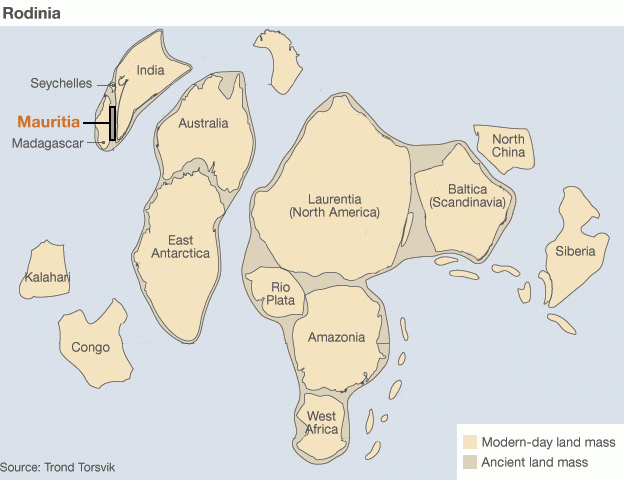Ancient 'Microcontinent' Buried Under Indian Ocean? Scientists Find Likely Continent Fragment

Scientists think they’ve discovered a long-lost continental fragment – and no, it’s not Atlantis.
An international team of scientists led by geologists from the University of Oslo was analyzing volcanic material on the beaches of the Indian Ocean island of Mauritius when they found something interesting. While most of the sand at the beach dated back to a volcanic eruption 9 million years ago, the sand also contained other material that was much older.
"We found zircons that we extracted from the beach sands, and these are something you typically find in a continental crust. They are very old in age," lead author Trond Torsvik told the BBC.
The zircons Torsvik and his colleagues found were between nearly 2 billion and 660 million years old. The scientists thought this material could be debris from an ancient continent hidden beneath Mauritius and the Indian Ocean. Lava from the volcanic eruption 9 million years ago would have brought the ancient fragments bubbling up to the surface.
In a paper published in the journal Nature Geoscience on Sunday, the scientists made their case, pointing to evidence showing that Mauritius sits on an anomalously thick crust of rock.
The tiny continent fragment, which the team has dubbed Mauritia, likely broke off and fractured into a ribbon-like structure somewhere between around 83 million and 61 million years ago, as Madagascar and India drifted apart. Mauritia may have been dry land for millions of years, stretching past even the time of the dinosaurs back to the Precambrian era, when life was likely absent from land. And now it lies buried.
Torsvik and his colleagues think Mauritia may be buried 10 kilometers (6.2 miles) underneath Mauritius and the Indian Ocean in an arc that swoops northeast to the Seychelles, an island nation that spans an archipelago of 115 islands.
Could scientists find definitive proof that Mauritia exists?
"We need seismic data which can image the structure. ... This would be the ultimate proof,” Torsvik told the BBC. “Or you can drill deep, but that would cost a lot of money."
Torsvik and his colleagues say that if their theory pans out, there could be many more microcontinents hidden deep beneath the ocean.
Some continental fragments manage to stay above water, though. Zealandia, which contains New Zealand, New Caledonia and several small islands, broke off from Australia sometime between 85 and 130 million years ago. Cuba, Jamaica, and some other Caribbean islands are also considered microcontinents.
SOURCE: Torsvik et al. “A Precambrian microcontinent in the Indian Ocean.” Nature Geoscience published online 24 February 2013.
© Copyright IBTimes 2024. All rights reserved.





















